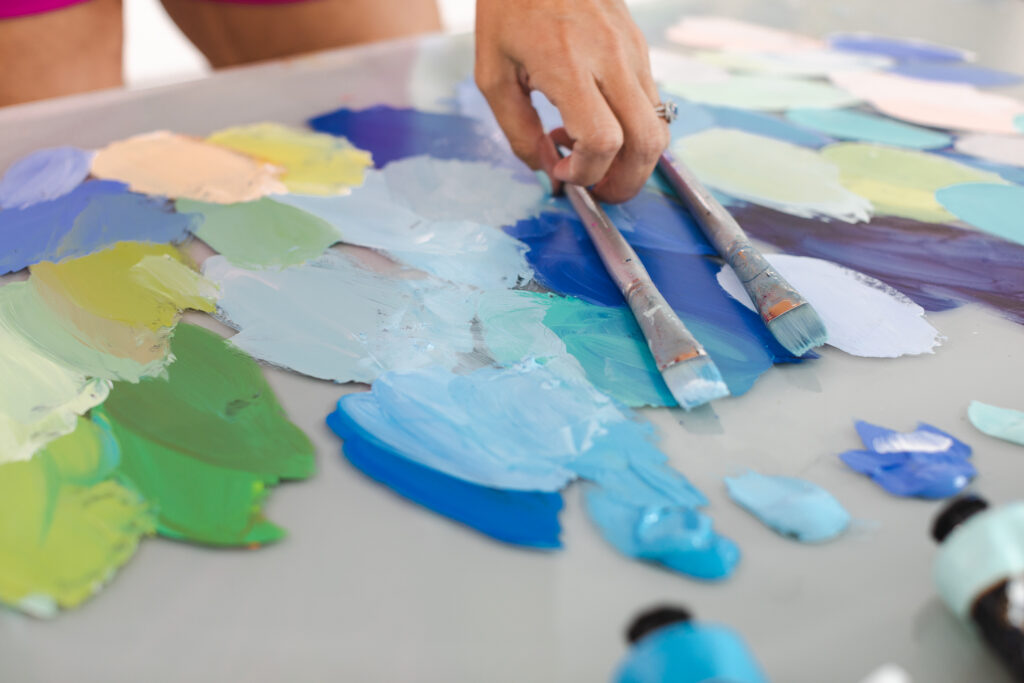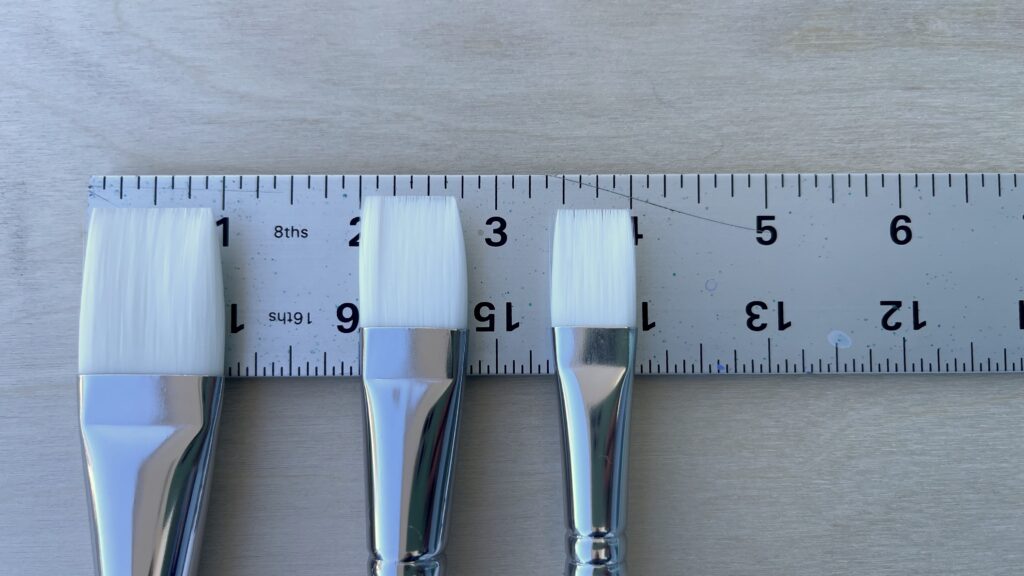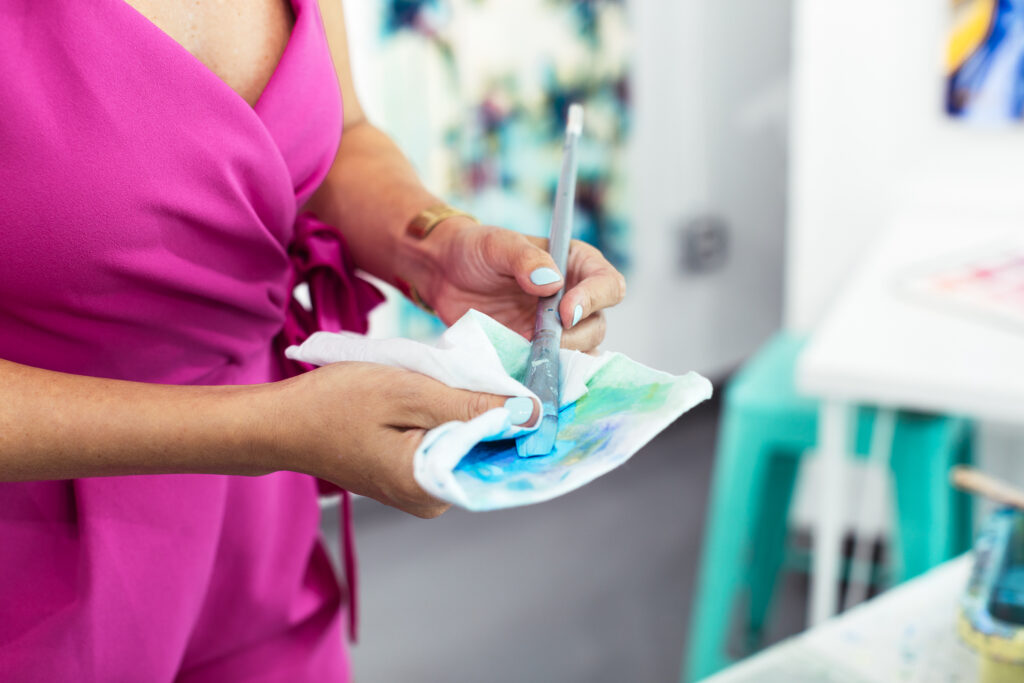Introduction
Welcome to the world of acrylic painting! If you’ve ever wondered how artists achieve those stunning effects and textures in their work, the secret often lies in the brush strokes they use. Mastering different brush techniques can not only elevate your artwork but also build your confidence as an artist. By exploring various brush strokes, you’ll find new ways to express yourself and bring your creative vision to life. Let’s dive into the fundamental and specialty brush strokes that can transform your acrylic painting practice.

Basic Brush Strokes
Flat Brush Strokes
Definition and Characteristics: Flat brushes have a rectangular shape with a broad, flat edge. They are known for their versatility and can create both broad, sweeping strokes and precise, narrow lines.
Applications in Acrylic Painting: Use flat brushes for laying down large areas of color, creating crisp edges, or achieving bold, graphic lines. They are perfect for blending and covering large surfaces efficiently.
Examples and Techniques: Try using a flat brush to create backgrounds or block in colors. Experiment with the angle and pressure to achieve different effects—like a smooth gradient or textured lines.
Round Brush Strokes
Definition and Characteristics: Round brushes have a pointed tip and a circular shape. They are excellent for detail work and creating a variety of strokes, from fine lines to broader swaths.
Applications in Acrylic Painting: Ideal for detailed work, round brushes can be used to paint intricate patterns, outline shapes, or add fine details to your artwork.
Examples and Techniques: Use a round brush to paint delicate floral elements or intricate textures. Vary the pressure and angle to create different line thicknesses and shapes.
Filbert Brush Strokes
Definition and Characteristics: Filbert brushes have a flat, oval shape with a rounded edge. This combination allows for both precise lines and broader, curved strokes.
Applications in Acrylic Painting: Filbert brushes are great for creating soft edges and blending colors. They are particularly useful for painting rounded shapes and textures.
Examples and Techniques: Experiment with a filbert brush to paint flowers or soft, blended backgrounds. Its versatility makes it a favorite for many artists.

Specialty Brush Strokes
Fan Brush Strokes
Definition and Characteristics: Fan brushes have bristles spread out in a fan shape. This design is perfect for creating texture and adding a unique touch to your paintings.
Applications in Acrylic Painting: Use fan brushes for texture effects, such as foliage, hair, or rough surfaces. They are also useful for dry brushing techniques to create fine details.
Examples and Techniques: Create textured tree leaves or grassy fields by dragging the fan brush across the canvas. Experiment with the pressure to achieve different levels of texture.
Rigger Brush Strokes
Definition and Characteristics: Rigger brushes are long and thin, with very fine bristles. They are designed for detailed line work and precision.
Applications in Acrylic Painting: Ideal for adding fine lines, details, and intricate patterns. They are often used in painting fine details such as branches, whiskers, or delicate designs.
Examples and Techniques: Use a rigger brush to paint detailed branches on trees or intricate designs on objects. The long bristles allow for controlled, precise strokes.
Dagger Brush Strokes
Definition and Characteristics: Dagger brushes have a unique shape, with a slanted edge that forms a dagger-like point. This brush is excellent for creating dynamic, angular strokes.
Applications in Acrylic Painting: Use dagger brushes for bold, sweeping strokes or sharp, angular lines. They are great for creating dramatic effects and adding movement to your painting.
Examples and Techniques: Create dynamic, sweeping lines or strong, angular shapes with a dagger brush. Experiment with its shape to achieve various effects.

Creating Texture with Brush Strokes
Dry Brush Strokes
Definition and Characteristics: Dry brushing involves using a brush with very little paint, allowing for a textured, scratchy effect.
Applications in Acrylic Painting: Dry brush techniques are perfect for creating textures such as rough surfaces, weathered looks, or subtle highlights.
Examples and Techniques: Try dry brushing over a textured surface to highlight the raised areas. It’s also effective for creating a sense of texture in backgrounds or fabric.
Impasto Brush Strokes
Definition and Characteristics: Impasto involves applying thick layers of paint to create a textured, three-dimensional effect on the canvas.
Applications in Acrylic Painting: Use impasto techniques to add depth and texture to your artwork. It’s great for creating bold, expressive strokes and making certain elements of your painting stand out.
Examples and Techniques: Apply thick, textured paint to create a sculptural effect. Experiment with different tools and brushes to add texture and dimension to your work.
Stippling Brush Strokes
Definition and Characteristics: Stippling involves creating texture through a series of small, dot-like strokes.
Applications in Acrylic Painting: Use stippling to create texture, shading, and intricate details. This technique can add depth and interest to various elements in your painting.
Examples and Techniques: Use stippling to create textures such as sand, gravel, or fabric. It’s a great way to add detail and dimension to your artwork.
Different Brush Strokes TL;DR
Understanding and mastering different brush strokes can really elevate your acrylic painting skills. Each technique offers unique ways to express creativity and add texture to your artwork. From broad strokes with a flat brush to intricate details with a rigger brush, experimenting with these methods will help you find your style and build confidence as an artist. If you’re curious about which brushes to use, you can check out my full collection here: Shelby Dillon Studio Brushes. Grab your brushes, practice these techniques, and let your creativity shine. Happy painting!
COMMENTS